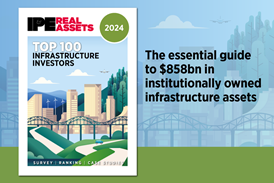Outlook 2013: Japan Regains Its Footing
Cross-border investors should take another look at the Japanese market which has been largely overlooked since the 1989 crash Asking a Japanese person whether the country manufactures cars may seem rather naïve but that is exactly what US national Lawrence Longua, now director of the New York ...
You have now reached your article limit
Already have an IPE Real Assets account? Sign in
PropertyEU has merged with IPE Real Assets
If you had a PropertyEU account, simply reset your password to get access to IPE Real Assets.
New users can Register for free today for access to the PropertyEU Archive and IPE Real Assets.
Registration also includes access to IPE

Five reasons to register today
- Access IPE Real Assets articles
- Daily news alerts and updates
- Track what the world’s leading institutional investors are doing
- Learn about the latest industry research and market analysis
- Comprehensive archive of data and intelligence on investors and fund managers, including the PropertyEU Archive




